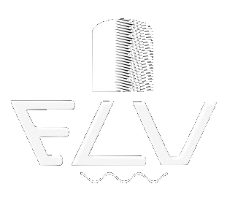The curing compositions are based on mixtures of unsaturated oligomers and vinyl monomers. In addition to oligomers and monomers, the compositions may contain pigments, fillers, inhibitors, stabilisers and other additives. Upon irradiation, copolymerisation of oligomer and monomer takes place to form a strong and insoluble three-dimensional cross-linked polymer. To date, technologies for radiation curing of various polymer coatings (paint, adhesion, magnetic, metallised, printing inks, etc.) on many surfaces (wooden, metal, ceramic, stone, paper, polymer, magnetic discs, massive rocket bodies, etc.) have been developed and introduced in industry.
The doses required for curing of coatings depend on the composition of the curing composition and irradiation conditions and are in the range of 20 - 200 kGy. Since the thickness of coatings, as a rule, is small, low-energy accelerators with energies from 0.15 to 0.4 MeV are predominantly used in this field of technology. In those cases when curing of the coating is combined, for example, with crosslinking of the polymer substrate, electron accelerators with energies of 1.2 - 1.5 MeV are used.

The curing compositions are based on mixtures of unsaturated oligomers and vinyl monomers. In addition to oligomers and monomers, the compositions may contain pigments, fillers, inhibitors, stabilisers and other additives. Upon irradiation, copolymerisation of oligomer and monomer takes place to form a strong and insoluble three-dimensional cross-linked polymer. To date, technologies for radiation curing of various polymer coatings (paint, adhesion, magnetic, metallised, printing inks, etc.) on many surfaces (wooden, metal, ceramic, stone, paper, polymer, magnetic discs, massive rocket bodies, etc.) have been developed and introduced in industry.
The doses required for curing of coatings depend on the composition of the curing composition and irradiation conditions and are in the range of 20 - 200 kGy. Since the thickness of coatings, as a rule, is small, low-energy accelerators with energies from 0.15 to 0.4 MeV are predominantly used in this field of technology. In those cases when curing of the coating is combined, for example, with crosslinking of the polymer substrate, electron accelerators with energies of 1.2 - 1.5 MeV are used.

Considerable interest in radiation curing is primarily due to its advantages over thermochemical curing. These include significantly lower (~85 times) energy consumption, gain in working space, high speed of the process, conducting it at room temperature, lower consumption of reagents. It should be emphasised that radiation curing is a more environmentally friendly process.
The curing compositions are based on mixtures of unsaturated oligomers and vinyl monomers. In addition to oligomers and monomers, the compositions may contain pigments, fillers, inhibitors, stabilisers and other additives. Upon irradiation, copolymerisation of oligomer and monomer takes place to form a strong and insoluble three-dimensional cross-linked polymer. To date, technologies for radiation curing of various polymer coatings (paint, adhesion, magnetic, metallised, printing inks, etc.) on many surfaces (wooden, metal, ceramic, stone, paper, polymer, magnetic discs, massive rocket bodies, etc.) have been developed and introduced in industry.
The doses required for curing of coatings depend on the composition of the curing composition and irradiation conditions and are in the range of 20 - 200 kGy. Since the thickness of coatings, as a rule, is small, low-energy accelerators with energies from 0.15 to 0.4 MeV are predominantly used in this field of technology. In those cases when curing of the coating is combined, for example, with crosslinking of the polymer substrate, electron accelerators with energies of 1.2 - 1.5 MeV are used.

The curing compositions are based on mixtures of unsaturated oligomers and vinyl monomers. In addition to oligomers and monomers, the compositions may contain pigments, fillers, inhibitors, stabilisers and other additives. Upon irradiation, copolymerisation of oligomer and monomer takes place to form a strong and insoluble three-dimensional cross-linked polymer. To date, technologies for radiation curing of various polymer coatings (paint, adhesion, magnetic, metallised, printing inks, etc.) on many surfaces (wooden, metal, ceramic, stone, paper, polymer, magnetic discs, massive rocket bodies, etc.) have been developed and introduced in industry.
The doses required for curing of coatings depend on the composition of the curing composition and irradiation conditions and are in the range of 20 - 200 kGy. Since the thickness of coatings, as a rule, is small, low-energy accelerators with energies from 0.15 to 0.4 MeV are predominantly used in this field of technology. In those cases when curing of the coating is combined, for example, with crosslinking of the polymer substrate, electron accelerators with energies of 1.2 - 1.5 MeV are used.



The East Siberian railway has tested
120 m of rails, which were treated with electron beam.
The figures show the method of railway rail treatment and a sample of the treated rail.
